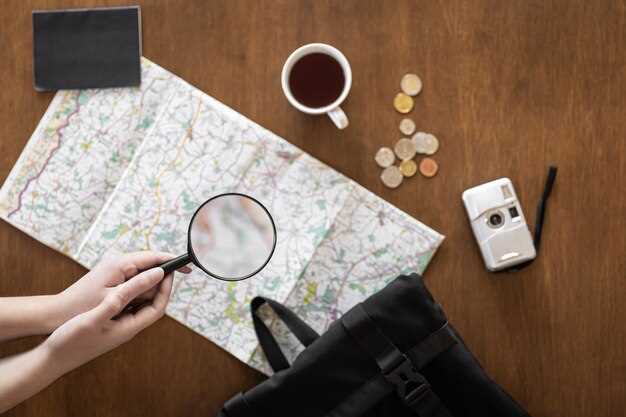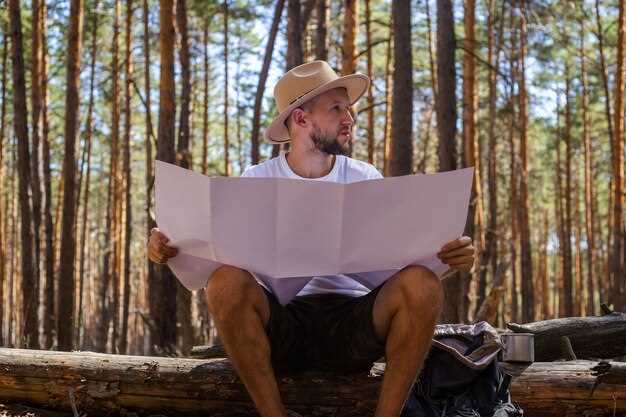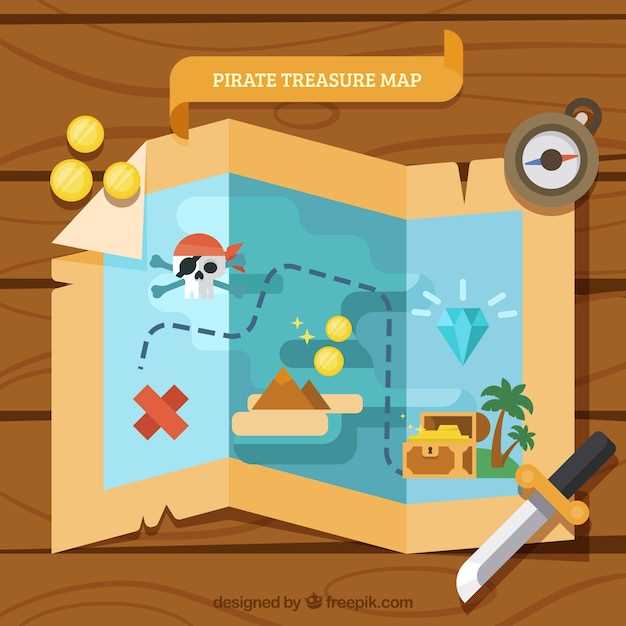
Embarking on a multi-day treasure hunt adventure can be one of the most exhilarating experiences, allowing participants to explore new places while engaging in a thrilling quest. A well-planned treasure hunt not only boosts teamwork and problem-solving skills but also offers unforgettable memories. To create a truly captivating journey, one must carefully design the route and challenges that will guide participants through various landscapes, both natural and urban.
Choosing the right location is crucial for setting the tone of your treasure hunt. Whether you opt for a dense forest, a historic city, or a secluded beach, each environment offers unique obstacles and opportunities for exploration. The route should be planned to blend scenic views with intriguing clues, leading adventurers through diverse terrains while maintaining a sense of discovery and excitement.
Incorporating puzzles, riddles, and interactive tasks into the treasure hunt is essential to keep participants engaged over the course of multiple days. Each challenge should be strategically placed along the route, progressively building upon the storyline and guiding teams toward the ultimate prize. By striking the right balance between adventure and challenge, you ensure that your treasure hunt remains thrilling from start to finish.
Choosing the Perfect Location for Your Treasure Hunt
Selecting the right location is a critical step in planning an unforgettable treasure hunt adventure. The ideal site should be engaging, safe, and accessible for all participants. Consider the interests and physical abilities of your treasure hunters, as well as the size of your group. A variety of terrains can enhance the experience, offering multiple clues and challenges along the route.
Historical sites, parks, and forests provide a rich backdrop for your hunt, each offering unique opportunities for themed clues and hidden treasures. Think about locations that have a story or significance, as this can add depth to the challenge. When mapping out your route, ensure that it encourages exploration and teamwork, while also being manageable within the time constraints you set.
Accessibility is another important aspect to consider. Choose a location that participants can easily reach, with sufficient parking and amenities nearby. Proximity to restrooms and shelter can enhance the overall comfort of the experience. Ensure you have contingency plans for inclement weather or unforeseen obstacles, allowing for a smooth adventure despite potential disruptions.
Lastly, scout the location in advance to identify potential hazards or areas that could pose challenges. Adjust your plan accordingly to ensure a safe and enjoyable treasure hunt. By carefully selecting a location and planning a thoughtful route, you set the stage for an extraordinary adventure that will be memorable for everyone involved.
Designing Engaging Clues and Challenges for Each Day
Creating an unforgettable treasure hunt requires a well-thought-out plan. To ensure participants remain engaged and excited, it’s vital to design clues and challenges that are both interesting and challenging. Here’s a practical approach to crafting these elements for each day of the adventure.
Begin by considering the overall route of the treasure hunt. Each day should introduce new locations, providing participants with varied experiences and stunning sights. Here are some steps to design compelling clues and challenges:
- Establish a Theme: A consistent theme ties the treasure hunt together. Identify a narrative or story that resonates with participants, which will guide the type of clues and challenges you create.
- Know Your Audience: Tailor the difficulty level of clues to match participants’ ages and skills. Younger participants may enjoy visual clues, while adults may prefer riddles or logic puzzles.
- Vary Clue Types: Use a mix of clue formats to keep each day fresh. Consider including:
- Riddles: Incorporate wordplay or logic puzzles that require critical thinking.
- Physical Challenges: Design tasks like scavenger hunts or obstacle courses that require teamwork or physical activity.
- Puzzles: Utilize jigsaw puzzles or ciphered messages that need decoding to reveal the next location.
- Integrate Local Culture: Involve elements of the local culture, history, or landmarks into the clues. This not only enhances the experience but also educates participants about their surroundings.
- Encourage Teamwork: Design challenges that foster collaboration. For example, create puzzles that need multiple participants to solve or tasks that require everyone’s input.
- Test Your Clues: Before the treasure hunt kicks off, have a trial run. Gather feedback to refine clues for clarity and engagement. Ensure that challenges are challenging but achievable.
By meticulously planning the route and incorporating diverse clues and challenges, you will create a thrilling multi-day treasure hunt adventure that captivates participants and keeps them eagerly anticipating each new day’s revelations.
Creating a Custom Route with Landmarks and Hidden Treasures
Designing an engaging multi-day treasure hunt requires careful planning of a route that not only challenges participants but also showcases local landmarks and hidden treasures. A well-crafted itinerary can enhance the overall experience by integrating fascinating stories, unique locations, and interactive elements.
Begin by selecting a central theme that connects all the landmarks and hidden treasures along the route. This will provide coherence and excitement to the adventure. Consider using historical, natural, or cultural themes as a basis for exploration.
Next, map out the route using various tools available online. Incorporate significant landmarks that align with your theme. Ensure these points of interest are diverse, offering participants a well-rounded experience. Include parks, monuments, or local artisans’ shops to enrich the clues and challenges.
| Landmark | Description | Activity/Clue |
|---|---|---|
| City Park | A beautiful outdoor space with sculptures and flowers. | Find the hidden key under the third bench. |
| Historic Tavern | A site dating back to the 1800s, rich in local lore. | Answer a riddle based on the tavern’s history to receive the next clue. |
| Art Gallery | Features works from local artists, with rotating exhibitions. | Locate a specific painting to unveil an additional hint. |
Incorporate hidden treasures–items that participants can physically seek out. These could be small tokens, letters, or even QR codes that lead to digital clues. Strategically scatter these treasures along the route to incentivize exploration and maintain excitement.
Lastly, ensure that each segment of the route is clearly defined, providing participants with maps and instructions that guide them seamlessly from one location to another. Create opportunities for spontaneous interactions, like local festivals or impromptu performances, to add layers of fun and unpredictability to the adventure.
Organizing Team Logistics and Accommodations Along the Route
Planning a successful multi-day treasure hunt adventure requires meticulous attention to logistics and accommodations. To ensure a smooth experience, start by mapping out the entire route, identifying key checkpoints and potential hazards. Each segment of the journey should take into account the physical capabilities of the team members as well as the types of terrains to be encountered.
Transportation is a critical aspect of logistics. Depending on the route’s location, consider whether to use personal vehicles, rental vans, or public transport. Organize a schedule that allows for timely travel between checkpoints, ensuring that teams can regroup and share their findings without losing momentum.
Accommodations should be arranged in advance to provide comfortable resting points for participants. Look for lodgings that cater to groups, such as hostels, cabins, or camping sites, that are strategically located along the route. Prioritize safety, accessibility, and amenities that will help your team recharge for the next day’s adventure.
Meal planning is another vital logistical consideration. Coordinate meal stops or provisions for each day, factoring in dietary restrictions and preferences. Pack sufficient snacks and hydration supplies to keep energy levels high during the hunt, especially for long stretches between accommodations.
Communication is essential for coordinating movements and addressing emergencies. Equip all team members with mobile devices and establish a clear communication protocol. Consider setting up a group chat or using walkie-talkies to maintain contact during the adventure.
Lastly, prepare for contingencies. Develop backup plans for unexpected changes in weather or route blockages. Ensure you have access to first aid kits and emergency supplies, which will contribute to the overall safety and enjoyment of the multi-day treasure hunt.
Establishing Safety Measures and Emergency Plans

When planning a multi-day treasure hunt adventure, establishing safety measures and emergency plans is paramount. This ensures that all participants have a secure experience while navigating the designated route. Begin by conducting a thorough risk assessment to identify potential hazards associated with both the terrain and the activities involved.
Communication is a critical component of any safety plan. Equip each participant with means to communicate, such as walkie-talkies or mobile phones, and establish a clear signal system in case of emergencies. It’s also advisable to designate a leader who will stay in contact with all groups throughout the adventure.
Ensure that all participants are familiar with basic first aid and that a well-stocked first aid kit is accessible at all times. Include supplies appropriate for the specific environment, accommodating for allergies and other individual health needs.
Emergency evacuation routes should be established along the multi-day trek. Participants should be briefed on the plan and practice it prior to embarking on the treasure hunt. Consider mapping out safe locations for shelter along the route where help can be sought if needed.
Establish a check-in process at regular intervals. This will not only enhance safety but also allow for timely responses should any participant fail to reach a scheduled meeting point. Make sure that each member understands the importance of adhering to the timeline and staying with the group.
In cases of potential wildlife encounters or extreme weather conditions, prepare participants by providing guidance on appropriate behaviors. Rest assured that being well-prepared fosters a sense of security among adventurers, allowing them to focus on the excitement of the treasure hunt.
Finally, review all safety measures and emergency plans with the team before the adventure begins. By prioritizing safety, you create an environment where everyone can enjoy the thrill of the hunt while feeling confident in their well-being.
Marketing Your Treasure Hunt to Attract Participants

Effectively marketing your multi-day treasure hunt is essential to ensure a successful event and attract a diverse group of participants. Start by defining your target audience. Consider who is most likely to enjoy a treasure hunt adventure–families, groups of friends, team-building companies, or adventure enthusiasts. Tailor your messaging to resonate with these specific demographics.
Utilize social media platforms to create buzz around your event. Share intriguing visuals and engaging content that highlights the excitement participants can expect. Consider creating teaser videos or behind-the-scenes glimpses that showcase the planning process and the unique aspects of your treasure hunt. Utilize hashtags to increase visibility and encourage sharing among participants.
Establish partnerships with local businesses and tourism organizations to broaden your reach. They can help promote your event to their customer base while potentially offering discounts or goodies for participants. Collaborating with influencers in the adventure or travel niches can also enhance your visibility and attract more participants.
Online advertising can be an effective strategy for reaching potential participants. Invest in targeted ads on platforms like Facebook or Google to specifically reach individuals interested in treasure hunts, outdoor activities, or team-building events. Additionally, consider creating a dedicated website or landing page that provides detailed information about the treasure hunt, including dates, locations, pricing, and registration options.
Engagement with your community is vital. Attend local events or fairs to distribute flyers and connect with potential participants face-to-face. Offer early bird registration discounts or group rates to incentivize sign-ups. Engage in email marketing campaigns to keep interested individuals informed and excited about the upcoming event. Regular updates can maintain interest and build anticipation.
Ultimately, your marketing plan should reflect the unique aspects of your multi-day treasure hunt. Highlight what sets your event apart, whether it’s the intriguing storyline, challenging puzzles, breathtaking locations, or the opportunity for community engagement. By crafting a compelling marketing strategy, you can attract a diverse group of participants eager to embark on an unforgettable treasure-hunting adventure.


